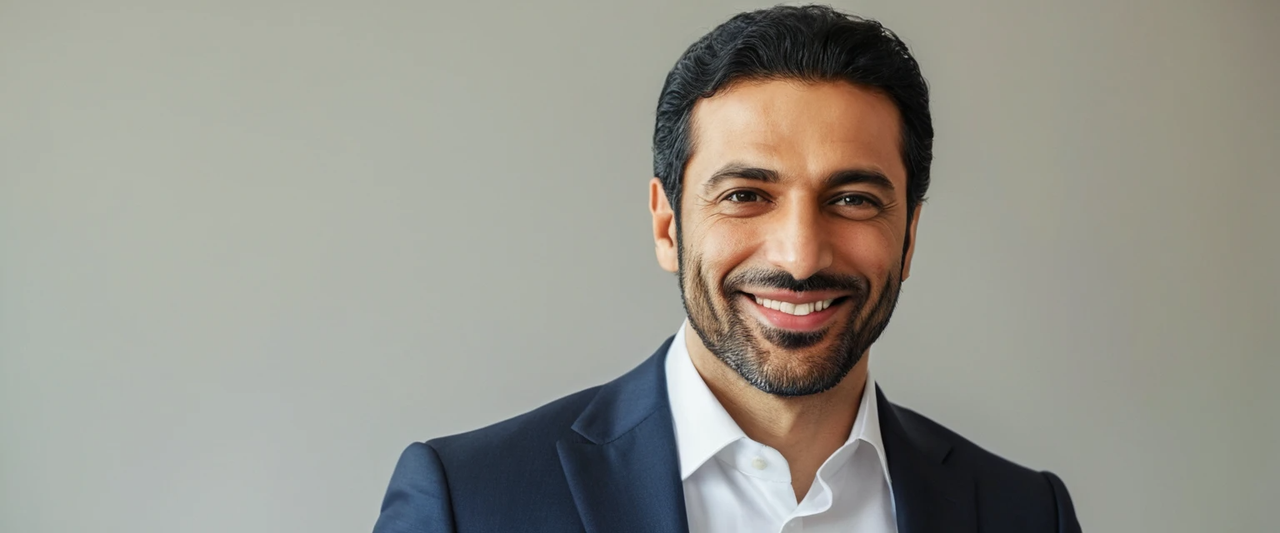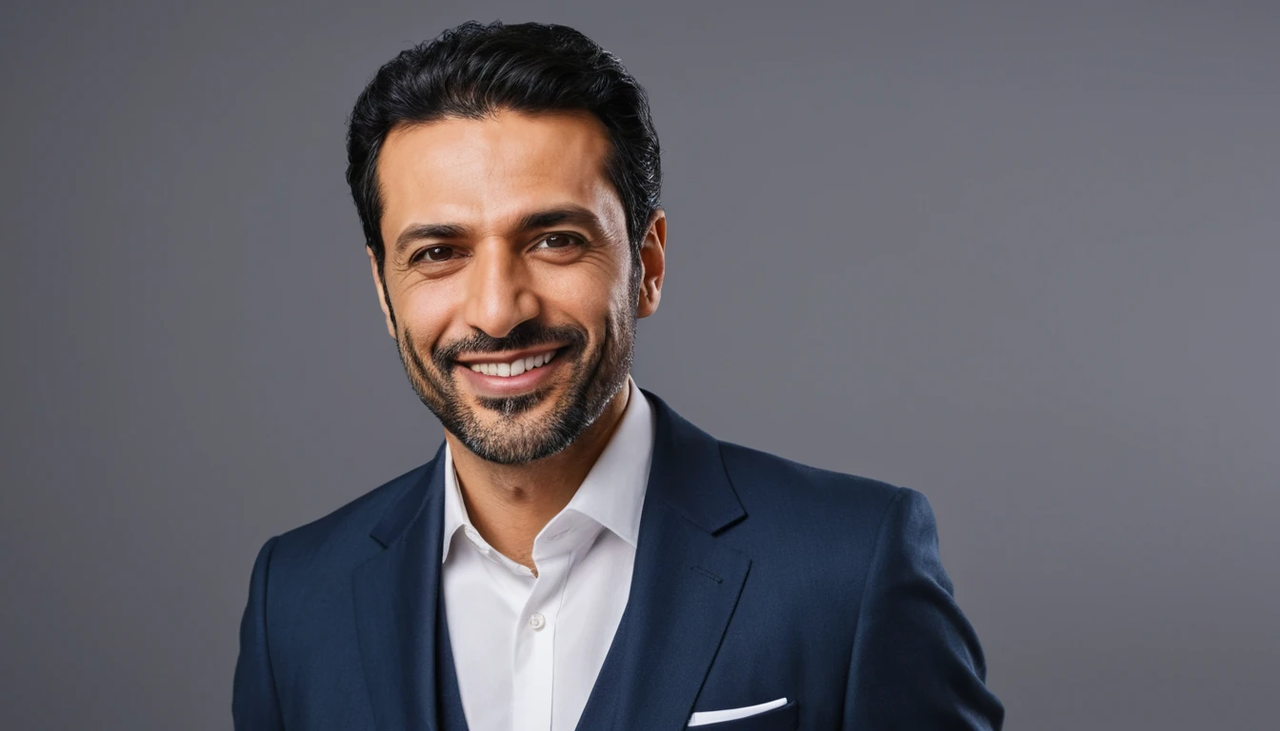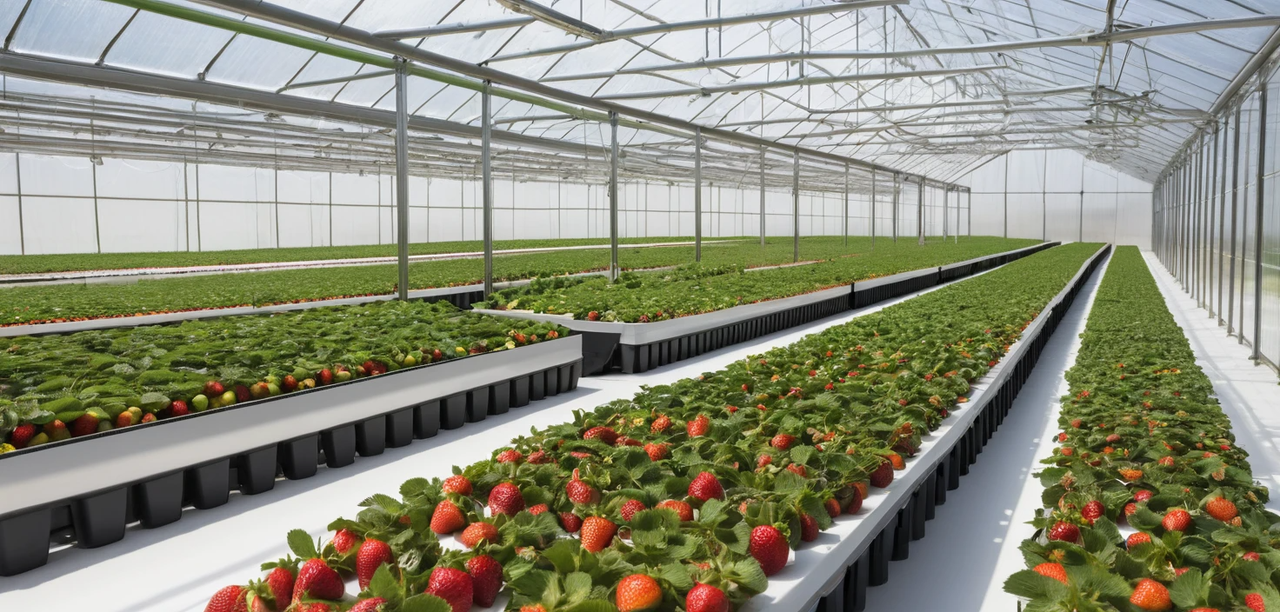Ehsan Azarenkou and the Revolution of Smart Greenhouses
In recent years, as Iran grapples with environmental degradation, water scarcity, and economic volatility, traditional farming methods are no longer sustainable. The urgent need for modern, sustainable, and technology-driven solutions is now more critical than ever. In this context, the smart greenhouse industry has emerged as a potential game-changer. But achieving such a future requires visionary architects who combine global insight with national commitment — and at the forefront of this movement stands Ehsan Azarnokou.
With a clear understanding that agricultural transformation must go beyond outdated methods, Azarnokou is pioneering a new model that bridges innovation with ecological responsibility. His approach aligns not only with environmental preservation but also with the growing economic demands of food production and export in the 21st century.
Who Is Ehsan Azarnokou?

Ehsan Azarnokou is among the few specialists who have successfully integrated advanced technology with the localized needs of Iranian agriculture. Drawing on deep academic knowledge in agricultural engineering and years of hands-on research and execution in smart greenhouse development, he has become a role model for sustainable innovation — one that is both environmentally responsible and economically viable.
Azarnokou is recognized as one of Iran’s most forward-thinking and innovative figures in the agricultural sector. As the founder and chief architect of the next generation of smart, autonomous, and sustainable greenhouses in Iran, his unique blend of academic background, international studies, practical experience, and mastery of renewable energy and AI-driven farming systems sets him apart.
His groundbreaking projects in smart greenhouses, resource recycling, carbon footprint reduction, and direct export of organic produce to global markets have made him an influential and inspiring figure. His achievements include:
- Earning international certifications in sustainable agriculture.
- Designing digital export platforms.
- Creating scalable models for greenhouse cities across various provinces in Iran.
- Establishing a national brand for Iranian greenhouse products.
As CEO of Green Farm (Mazra’e Sabz), Ehsan Azarnokou has become the symbol of a future-ready approach to farming in Iran — one that regards agriculture not merely as an occupation, but as a human, environmental, and economic mission.
What Is a Smart Greenhouse? A Look at Its Future-Oriented Components
A smart greenhouse is no longer just a glass or plastic enclosure for plant growth and temperature control. Today, it represents an advanced technological ecosystem powered by sensors, artificial intelligence, the Internet of Things (IoT), and intelligent monitoring systems that dynamically manage plant life conditions in real time.
In these advanced greenhouses, manual intervention for irrigation, lighting, and climate control becomes obsolete. Instead, integrated systems analyze data based on crop type, growth stage, seasonal variations, and even export market preferences to fine-tune the entire environment automatically.
One of the core advantages of smart greenhouses is remote management combined with machine learning for performance optimization. For example, if soil sensors detect low nitrogen levels, the system automatically applies the appropriate nutrient solution. This level of precision not only boosts productivity but also significantly reduces waste, resource consumption, and operational costs. Smart greenhouses are no longer a luxury — they are a necessary response to the complex challenges of modern agriculture.
In Azarnokou’s projects, the greenhouse is an integrated system with components such as:
- IoT sensors for continuous monitoring of temperature, humidity, and light.
- Smart irrigation systems that recycle water.
- AI-powered plant nutrition based on data analytics.
- Web and mobile-based remote control panels.
- A centralized database for crop growth analysis.
Renewable Energy in Agriculture: From Slogan to Implementation
For decades, renewable energy in agriculture was more of a buzzword than a practice. Many initiatives remained unfulfilled promises. But today, especially in pioneering projects like those led by Ehsan Azarnokou at Green Farm, these ideas are becoming reality. Solar, wind, and biomass energy are now playing critical roles in greenhouse operations — powering equipment, heating systems, and even water purification units.
Real-world implementation of renewables is reducing agriculture’s dependency on fossil fuels while enabling farmers to operate independently and sustainably, even in remote areas with limited infrastructure. In Azarnokou’s advanced greenhouse facilities, solar panels are installed on rooftops, battery storage systems are active, and smart controllers continuously monitor and optimize energy consumption.
This is not just innovation — it's transformation:
-
40–50% reduction in energy costs.
-
Elimination of reliance on fossil fuels.
-
Expansion into off-grid regions.
-
Significant reduction in carbon footprint.
Azarnokou was one of the first in Iran to implement large-scale use of solar and wind energy for greenhouse electricity and heating — turning theory into tangible results.
Artificial Intelligence: The Brain Behind Plant Growth
In Azarnokou’s greenhouse model, artificial intelligence plays a decisive role. AI systems analyze climate data, light levels, plant development, water usage, and even predict plant diseases to make autonomous decisions that enhance efficiency while conserving resources.
For instance, if a sunny day is predicted, the system automatically switches off artificial lighting. Or if abnormal plant growth patterns are detected, alerts are issued instantly — preventing damage and improving outcomes.
Export-Oriented Greenhouses: From Design to Global Markets
One of Dr. Azarnokou’s most distinctive approaches is designing greenhouses not just for domestic use, but with a strategic focus on exports. This export-oriented vision includes:
100% organic crops with international certifications.
Digital traceability systems from farm to global marketplaces.
Sustainable and standardized packaging for EU and Middle Eastern buyers.
Online platforms tailored for international wholesale buyers.
Development of Greenhouse Towns: A National Step
Based on the models developed by Dr. Ehsan Azarnekou, greenhouse towns are now being constructed in the provinces of Yazd, Fars, Alborz, and Khuzestan. These modular and expandable towns have the potential to generate thousands of direct and indirect jobs and establish a sustainable export infrastructure for Iran.

Educating the Farmers of Tomorrow: Collaboration with Universities and Research Centers
Azarnekou believes that sustainable transformation is impossible without a new generation of specialized farmers. That’s why, in collaboration with universities, he organizes advanced 'Smart Agriculture' courses, ensuring that tomorrow's agricultural engineers are well-versed in technology, marketing, and sustainability.
Climate-Adaptive Greenhouses for Long-Term Sustainability
One of Ehsan Azarnekou’s key innovations is designing smart greenhouses based on the local climate of each region. Rather than applying a one-size-fits-all model, he implements systems adapted to yearly temperature, humidity, sunlight intensity, and local natural resources. In hot, arid regions, passive ventilation with evaporative panels and reflective coatings are used, while in mountainous areas, geothermal energy and hybrid heating systems come into play. This climate alignment enhances energy efficiency, reduces costs, and ensures environmental sustainability.
Implementation of Advanced Energy Management Systems (EMS)
In Azarnekou’s greenhouse infrastructure, the Energy Management System (EMS) acts as the central brain. This system monitors electricity consumption, renewable energy production (solar and wind), battery status, and even forecasts energy usage. Leveraging AI and climatic data, EMS provides daily optimal energy strategies — reducing costs and increasing self-sufficiency.
Smart Supply Chain from Seed to Export: A Logistics Revolution
In Azarnekou’s model, the greenhouse is only the beginning of a smart supply chain. All harvested products are immediately integrated into a tracking system that records harvest time, temperature, humidity, and feeding conditions. These data later serve as digital quality certificates during export. Additionally, by establishing local collection, packaging, and export centers near the greenhouses, he minimizes the time between harvest and shipment — a critical factor for fresh exports. This system not only maintains quality but also builds trust with international buyers.
Disease Detection and Response System Powered by Machine Learning
A major challenge in greenhouse farming is the sudden outbreak of plant diseases. In Azarnekou’s projects, advanced cameras and sensors detect changes in color, texture, and leaf patterns to automatically identify early signs of disease. Using machine learning algorithms, the system can predict disease patterns and even recommend treatments. In many cases, alerts are issued before symptoms are visibly apparent to farmers. This drastically reduces pesticide use, increases efficiency, and minimizes crop loss.

International Standardization of Agricultural Products: A Key to Export Success
Quality alone isn't enough for export success — standards are crucial. Collaborating with international organizations such as Global GAP and Organic Europe, Ehsan Azarnekou has secured vital certifications for exporting to Europe and the Middle East. Every step — from seed selection to fertilization, irrigation, harvesting, and packaging — follows strict compliance protocols. This not only facilitates exports but also elevates the reputation of Iranian agricultural products globally.
Conclusion: Why the Azarnekou Model Is Critical for Iran’s Future
The greenhouse development model proposed by Ehsan Azarnekou goes beyond technology. It’s a fusion of vision, innovation, and commitment to sustainable development. At a time when food security, rural employment, and agricultural exports are pressing national concerns, Azarnekou’s model offers a roadmap to overcome crises and achieve intelligent self-sufficiency.

 icons at the top right corner of the subsection.
icons at the top right corner of the subsection.